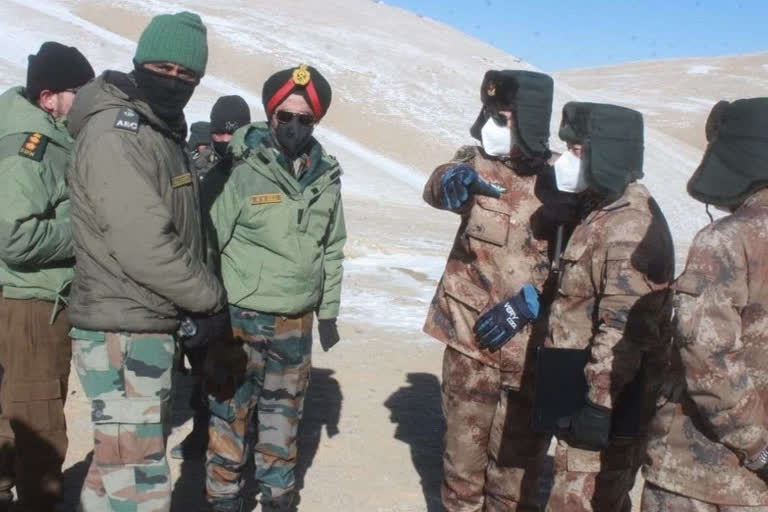New Delhi: On the northern and southern banks of the placid waters of the picturesque Pangong Tso in eastern Ladakh, soldiers from the infantry and armoured corps from Asia’s two biggest militaries stand just 500 metres from each other as of Tuesday after ten rounds of senior commander level talks between the Indian Army and the Chinese People’s Liberation Army (PLA).
“Till the process of disengagement began (from February 10), the two armies were dangerously close in eyeball-to-eyeball situations with just about 30-40 metres between them. The mind can play tricks in those heights and hostile terrain. That was dangerously close and anything could happen. But now, the armies have retraced their steps and about 500 metres separate them. Eyeball-to-eyeball faceoff situation has been averted,” an official source familiar with the developments told ETV Bharat.
“But what marks the success of the ten rounds of talks is the fact that any more Galwan-type violent incidents have been prevented. But at the same time, the withdrawn troops lie in positions from where they can rush back to the vacated positions in less than half an hour.”
“But the commander-level military talks are just one dimension of the India-China negotiations. There is the WMCC (Working Mechanism for Consultation and Coordination for India-China Border Affairs) level, Special Representative talks at the NSA level, and most importantly, back channel talks which are taking place often at any given point of time at various levels including the political level,” the source added.
In the a bid to ‘disengage and de-escalate’, the ten rounds of talks—on June 6, June 22, June 30, July 14, August 2, September 21, October 12, November 6, January 24 and February 20—have taken place on the Indian side of the LAC in Chushul in eastern Ladakh and in PLA’s Moldo garrison on the Chinese side.
Future rounds of talks will deliberate on disengagement in the other faceoff areas at Gogra and Hot Springs while the situation in Depsang is yet to change as it is considered a legacy issue that existed prior to the current situation that began from April-May 2020 onwards.
From the Indian perspective, the agenda for the talks are decided by the high-level China Study Group (CSG), which is headed by the National Security Advisor with the cabinet secretary, home secretary, foreign secretary, defence secretary, vice-chiefs of the Army, Navy and IAF, and the chiefs of the Intelligence Bureau (IB) and Research and Analysis Wing (RAW) as members.
It is only after the agenda is cleared that the military takes over at the ground level to negotiate and take stock of what has been executed.
The Indian side comprises the Leh-based 14 Corps commander Lieutenant General PGK Menon, Navin Srivastava, joint secretary in the foreign ministry, a Brigadier ranked officer from the DGMO, besides local military representatives.



